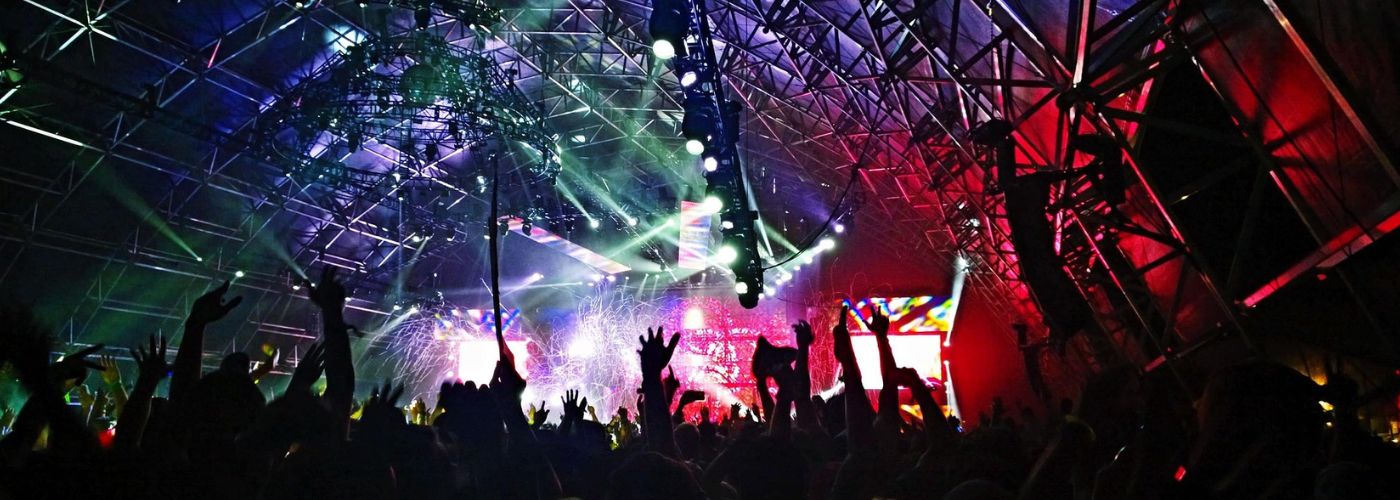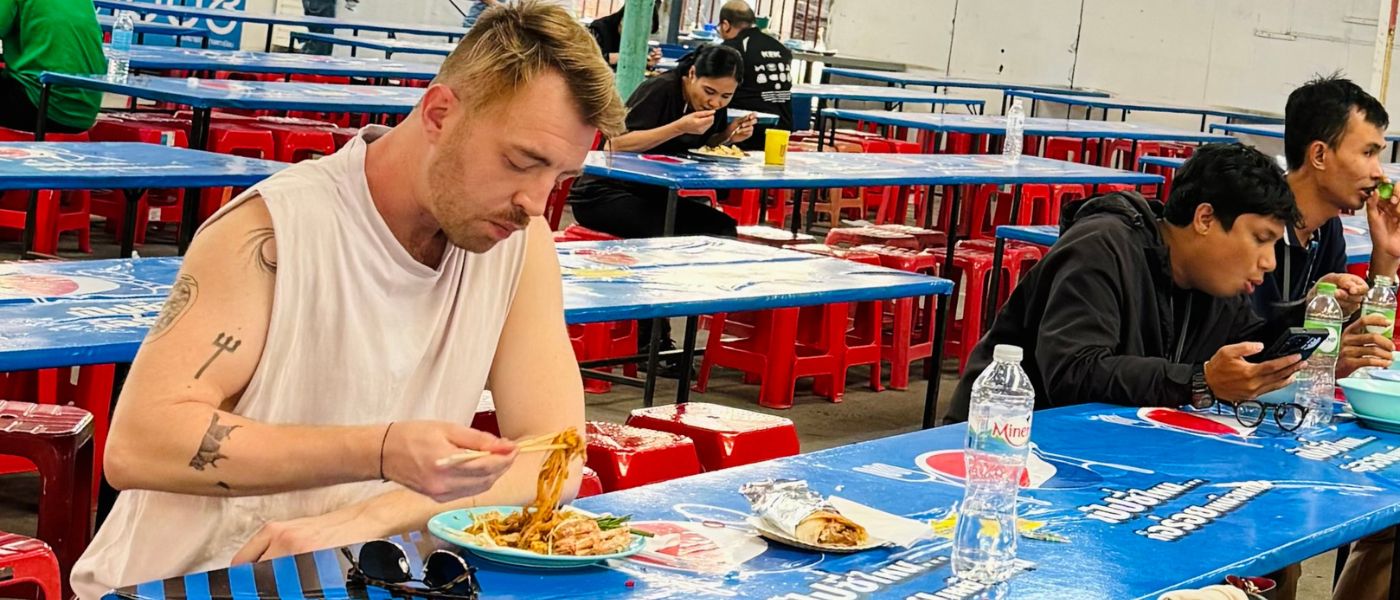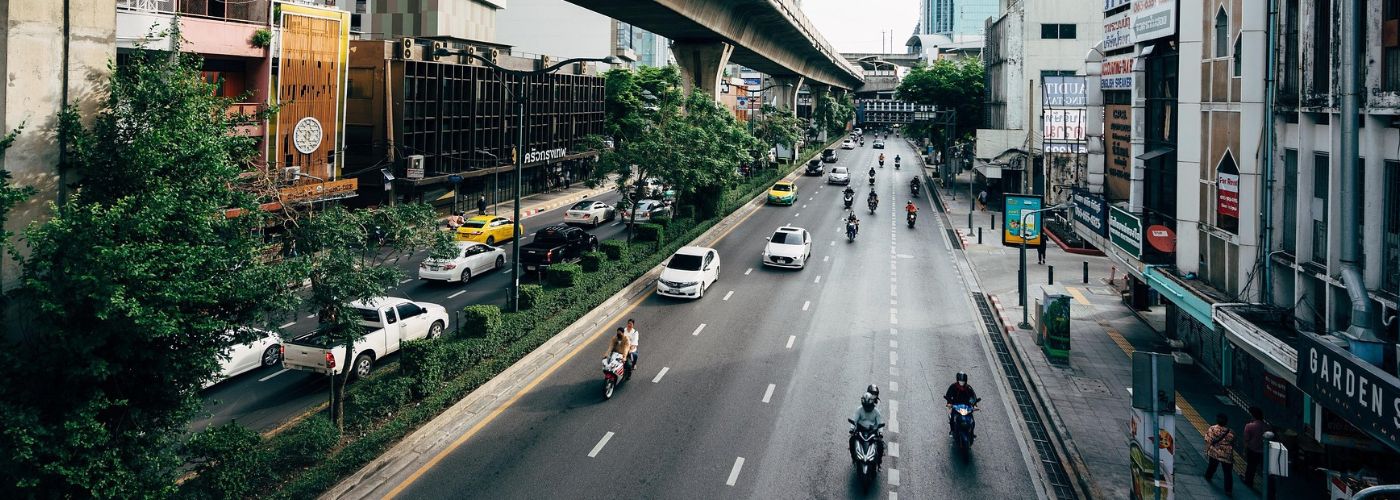I went to Verknipt Arena in Amsterdam with a good friend of mine, and it felt like the last rave for a while. After a decade of non-stop parties, late nights, next-day afters, and the chaos of the 20s, pills, little white packets, and endless dancing, it was a moment to reflect. The music was still electric, the crowd was wild but friendly, but something had shifted in me: it was time to start thinking about the 30s, about health, balance, and a life beyond the rave.
Raving in my 20s
My 20s were defined by nights that never seemed to end. We went to party after party, losing ourselves in the music, the lights, and the sheer energy of the crowd. Every weekend was an adventure, new parties, new DJs, and the thrill of discovery that made life feel electric. The social scene was intense. You met people in dark rooms, bonded over the beats, shared laughs, and sometimes shared more than just music. We danced until dawn, fueled by adrenaline and, often, substances that made the world feel bigger, wilder, and more exhilarating than it really was. Pills, little white packets, and endless shots became part of the ritual; it was a kind of reckless camaraderie, a shared defiance of normal life.
But it was about more than the drugs or the music, it was about belonging. In those rooms, surrounded by strangers who quickly felt like friends, there was a sense of community that was hard to find anywhere else. Everyone was chasing the same highs, not just chemically, but emotionally, the rush of connection, the joy of being fully present, and the comfort of knowing you weren’t alone in your search for something more. For many of us, the rave wasn’t just a party; it was a temporary family, a place where you could shed your outside life and feel completely understood. It wasn’t just about getting high, it was about exploring limits, creating memories that felt larger than life, and finding a space where you truly belonged. Looking back, it was chaotic, intoxicating, and undeniably formative.
The wild side: drugs, alcohol, and sketchy moments
The rave scene in your 20s is intoxicating, not just for the music, but for the feeling of invincibility. You think nothing can touch you: you do it all, sometimes without thinking twice. For a decade, this was our reality: pushing limits, chasing euphoria, and ignoring the quiet voice in the back of your mind that knew the risks. Looking back, it’s easy to romanticize, but the truth is stark. Nights blurred together, hangovers turned into weeks of fatigue, and the line between fun and danger often disappeared entirely. Pills that seemed harmless at the time could have caused serious health problems, or worse. Snorting substances felt like part of the ritual, but it was a risky shortcut to escape or amplify the high. The consequences weren’t always immediate, but they were real: crashes, anxiety, paranoia, and the slow erosion of physical and mental health.
There’s also the social risk. Parties that felt safe could turn sketchy in a heartbeat. You learned to trust your instincts, but sometimes instincts weren’t enough. Misplaced trust, bad batches of drugs, or just being in the wrong place at the wrong time could turn a night of fun into a dangerous situation. Despite the warnings, the thrill felt unbeatable in your 20s. The sense of invincibility, believing that nothing could harm you was intoxicating. It made the risk feel worth it, made the adrenaline higher, and made you believe that consequences were something for “later.” But later always comes, sometimes in ways that are irreversible.
The takeaway is simple but essential: the wild side can be exhilarating, but it comes at a cost. No matter how invincible you feel, your body and mind are not bulletproof. Respect the highs, but never underestimate the lows. Knowing the risks, and having the courage to step back when necessary, is what separates reckless nostalgia from long-term regret.
Hungary’s harsh drug laws: punishment over education
I’m from Hungary, and my country’s drug laws are notorious for being draconian, and they punish curiosity rather than educate. Possessing even the tiniest amount can land someone in prison, sometimes for years, while leaving young people completely unprepared to navigate the realities of drugs. The government treats youth like criminals-in-waiting instead of human beings who need guidance and support. This isn’t protection; it’s negligence. Rather than funding harm reduction programs, comprehensive drug education, or safe spaces to learn about responsible use, the authorities double down on fear and punishment. The message is clear: don’t make a mistake, or you’ll pay for life: ignorance be damned. It’s a policy that punishes potential instead of fostering understanding, leaving countless young people to experiment in unsafe, unregulated environments.
When I was 19, back in 2014, I was arrested at Sziget Festival simply for smoking weed. At the time, it felt shocking, but I hoped things would change. They didn’t. In fact, the situation has only worsened. Hungary’s approach to drugs is moving backward, dragging us toward the Stone Age, while progressive European nations are decriminalizing or even legalizing cannabis, focusing on regulation, education, and harm reduction. Instead of learning from their examples, the government continues to criminalize curiosity and punish youth, showing a blatant disregard for reality, safety, and common sense. It’s not just outdated, it’s actively harmful for the younger generations.
The solution would be obvious: education, not incarceration. Schools and community programs should teach young people about risks, effects, and safer choices. Harm reduction initiatives should be accessible, honest, and practical. A government serious about protecting its youth would prioritize knowledge and prevention over fear and punishment. Until then, the system will keep criminalizing mistakes while doing nothing to prevent them: a bitter cycle with real human costs.
Verknipt: a highlight of Amsterdam’s rave culture
Visiting Verknipt Arena in Amsterdam was unforgettable. I went with a friend who lives in the city, arguably the most educated person I know, shout out to him for offering his couch and taking a good care of me! We partied until 7 in the morning, losing track of time as the beats carried us through the night. The atmosphere was electric. Every corner of the arena pulsed with energy: lights bouncing off walls, people moving in sync with the bass, DJs creating a wave of sound that felt almost tangible. It wasn’t just a party, it was an experience, a space where anyone could let go and belong. What made Verknipt stand out was the way it balanced chaos with creativity: the crowd was wild but respectful, the music adventurous, and every set felt like a journey.
If you ever go, my small insider tip is simple: pace yourself and soak it all in. There’s a reason Verknipt has earned its reputation in the European rave scene, it’s immersive, intense, and unforgettable, a perfect snapshot of why the 20s were all about chasing moments like this.
The shift: entering the 30s with a calmer lifestyle
As I approached my 30s, the thrill of non-stop parties and late nights began to lose its charm. What once felt exhilarating is starting to feel exhausting, and I’m beginning to realize the consequences of years of excess: hangovers, anxiety, fatigue, and nagging health concerns cannot be ignored. My priorities are shifting: health, relationships, and self-awareness will matter more than chasing the next high or the next all-nighter.
The transition won’t happen overnight, but I’m already noticing the change. Mornings are starting to feel more important than dawns, and mindfulness is slowly replacing recklessness. I plan to pay closer attention to my body: sleep, nutrition, and mental well-being will become essential, a way to rebel against the chaos I once embraced. I know the temporary highs of drugs and late nights aren’t worth the long-term risks: heart strain, weakened immunity, anxiety, or worse could catch up faster than I want. Socially, I want to focus on deeper connections, meaningful conversations, and experiences that build life instead of eroding it. I wanna go to more weddings in my 30s than funerals: a reminder that reckless living has real consequences, and that taking care of myself matters not just for me, but for everyone I care about. Nights out will still happen, but with moderation, intention, and awareness, focusing on experiences rather than excess.
The 30s aren’t about giving up fun; they’re about redefining it. Excitement can be safe. Balance doesn’t have to be boring. Life’s most lasting highs will come from clarity, from health, from connection, not from raving till the morning.
Lessons learned from a decade of parties
Looking back on a decade of wild nights, there’s a lot I’ll miss for sure: the pure, unfiltered energy of the crowd, the music that seemed to move your entire body, the sense of belonging in a room full of strangers who somehow felt like friends. Raves are communal experiences, and science even shows that synchronized movement to music releases endorphins and oxytocin, reinforcing social bonds and feelings of euphoria. Those nights were electric, formative, and unforgettable. But there’s also a lot I don’t miss: chronic sleep deprivation, which comes from staying out until dawn week after week, can weaken the immune system, impair cognitive function, and increase the risk of depression and anxiety. Frequent stimulant or party drug use can strain the heart, raise blood pressure, and affect neurotransmitters, potentially leading to long-term mental health issues. The crashes and comedowns weren’t just emotional, they were biological, impacting hormones, brain chemistry, and overall well-being.
What seemed like invincibility in your 20s often comes with hidden costs. Memory lapses, mood swings, and chronic fatigue can start subtly, but over time they add up. Even occasional risky behavior, like taking untested substances or mixing drugs, carries the possibility of serious injury, overdose, or worse. It’s a harsh reminder that your body and mind aren’t bulletproof.
For those still immersed in the scene, my advice is simple: enjoy the music, the people, and the freedom, but respect your limits. Hydrate, sleep, and give your body time to recover. Be cautious with substances, educate yourself about effects, interactions, and dosages. Make memories without endangering your future. Modern neuroscience shows that repeated high-risk drug use can permanently alter brain pathways related to reward, impulse control, and emotional regulation, meaning the thrill of a night could come at a lifelong cost. Nostalgia is powerful, but it shouldn’t blind you to reality. You can hold onto the joy of your youth while still making responsible choices. The key lesson from a decade of parties is balance: revel in the energy, but never at the expense of your health, your mind, or the life you’re building for the decades to come. After all, the best stories from your 20s are worth remembering, but only if your 30s give you the clarity and strength to live them fully.






